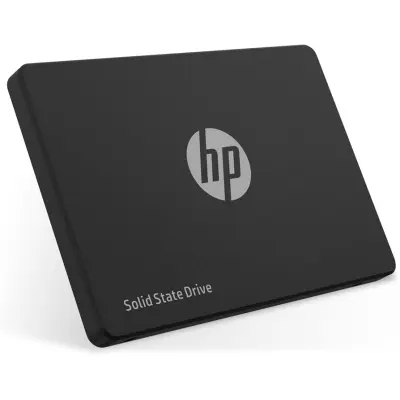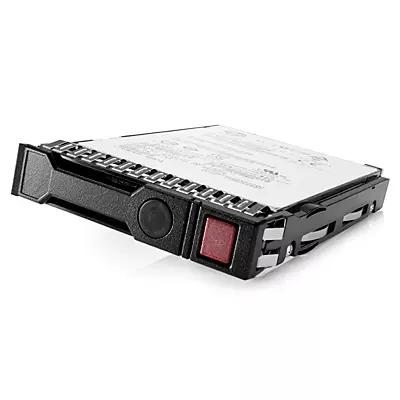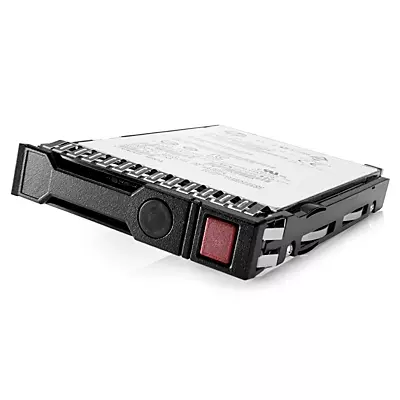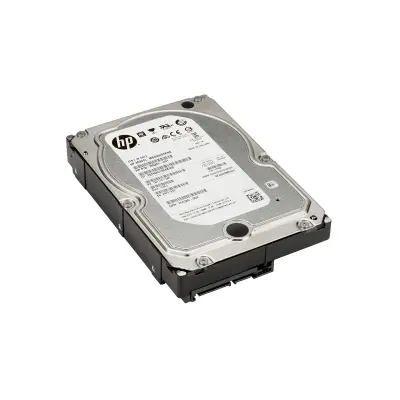HP 817063-001 120GB SATA 6Gb/s 3.5" LFF Read Intensive SC SSD

Shipping $99+
$319.00 $325.95
HP 817063-001 Product Specs
| Brand | HP |
| Capacity | 120GB |
| Hot-Swappable | Yes |
| Carrier Type | Smart Carrier (SC) |
| Interface Type | SATA |
| Data Transfer Rate | 6Gb/s |
| Workload | Read Intensive (RI) |
| NAND Flash Memory Type | Multi-Level Cell (MLC) |
| Form Factor | 3.5" LFF |
HP 817063-001 Description
The HP 817063-001 120GB SATA 6Gb/s 3.5" LFF Read Intensive SC SSD is a reliable and high-performance solid-state drive designed specifically for enterprise environments. Ideal for applications requiring fast read speeds and consistent performance, this SSD is perfect for use in HP ProLiant server models including ProLiant DX, DL, ML, SL, BL, XL, and CL series. Its compatibility with a wide range of ProLiant servers makes it a versatile choice for data centers and IT infrastructures looking to enhance storage efficiency and reduce latency.
Key specifications of this SSD highlight its robust design and advanced technology. It features a 120GB capacity, providing ample space for critical data and applications. The drive supports hot-swapping, allowing for easy replacement or upgrades without downtime. Its Smart Carrier (SC) design ensures secure installation and improved airflow within server chassis. Utilizing a SATA interface with a 6Gb/s data transfer rate, it delivers fast and reliable data access. This SSD is optimized for read-intensive workloads and employs Multi-Level Cell (MLC) NAND flash memory, balancing performance and endurance. The 3.5" Large Form Factor (LFF) fits seamlessly into standard server bays.
- Brand: HP
- Capacity: 120GB
- Hot-Swappable: Yes
- Carrier Type: Smart Carrier (SC)
- Interface Type: SATA
- Data Transfer Rate: 6Gb/s
- Workload: Read Intensive (RI)
- NAND Flash Memory Type: Multi-Level Cell (MLC)
- Form Factor: 3.5" Large Form Factor (LFF)
For maintenance and replacement, the following spare part number is associated with this SSD:
Payment Options
All Credit Cards Accepted + PayPal
PO Accepted from Qualified Businesses and Government Entities
Delivery Options
Overnight and Express Delivery in USA
Get within 1 to 3 days
Free Ground in USA
2 to 6 days (Varies by location)
$49 Ground Shipping To Canada
International Delivery Options Available
Contact Us For Detail
Return & Warranty
30 days return
Warranty vary by product please see our Policies page
Trusted by 5000+ IT Managers, System Integrators & Data Center Experts


Easy Returns
"We purchased the wrong part by mistake. Boost hardware made it easy to return and quickly issued me a refund.""

Lowest Price By Far
"We were able to purchase 10x HP 782995-001 for 25% less than the next lowest price. Very impressed with the quick shipping and lack of issues."

Excellent Customer Service
"Excellent customer service; they got in touch with me right away. They upgraded my next order to free 2-day shipping."

![]() We found 5 subs for the HP 817063-001
We found 5 subs for the HP 817063-001

- Spindle Speed: 7.2K
- Capacity: 120GB
- Interface: SATA
- Form Factor: 3.5" LFF
- Brand: HP
- Workload: Read Intensive (RI)
- NAND Flash Memory Type: Multi-Level Cell (MLC)
- Hot-Swappable: Yes
- Data Transfer Rate: 6Gb/s

- Capacity: 960GB
- Interface: SATA
- Form Factor: 2.5" SFF
- Brand: HP
- Workload: Mixed Use (MU)
- NAND Flash Memory Type: Triple-Level Cell (TLC)
- Hot-Swappable: Yes
- Data Transfer Rate: 6Gb/s
- Encryption: Digitally Signed (DS)

- Capacity: 120GB
- Interface: SATA
- Form Factor: 3.5" LFF
- Brand: HP
- Workload: Read Intensive (RI)
- NAND Flash Memory Type: Multi-Level Cell (MLC)
- Hot-Swappable: Yes
- Data Transfer Rate: 6Gb/s
- Encryption: Digitally Signed (DS)

- Capacity: 960GB
- Interface: SATA
- Form Factor: 2.5" SFF
- Brand: HP
- Workload: Mixed Use (MU)
- NAND Flash Memory Type: Multi-Level Cell (MLC)
- Hot-Swappable: Yes
- Data Transfer Rate: 6Gb/s
- Encryption: Digitally Signed (DS)

- Capacity: 120GB
- Interface: SATA
- Form Factor: 2.5" SFF
- Brand: HP
- Workload: Read Intensive (RI)
- NAND Flash Memory Type: Multi-Level Cell (MLC)
- Hot-Swappable: Yes
- Data Transfer Rate: 6Gb/s
Customer Reviews
Availability
New Condition: In Stock
Refurbished Condition: In Stock
Delivery Options
Overnight and Express Delivery in USA
Get within 1 to 3 days
Free Ground in USA
2 to 6 days (Varies by location)
$49 Ground Shipping To Canada
International Delivery Options Available
Contact Us For Detail
Payment Options
All Credit Cards Accepted + PayPal
PO Accepted from Qualified Businesses and Government Entities
Return & Warranty
30 days return
Warranty vary by product please see our Policies page

